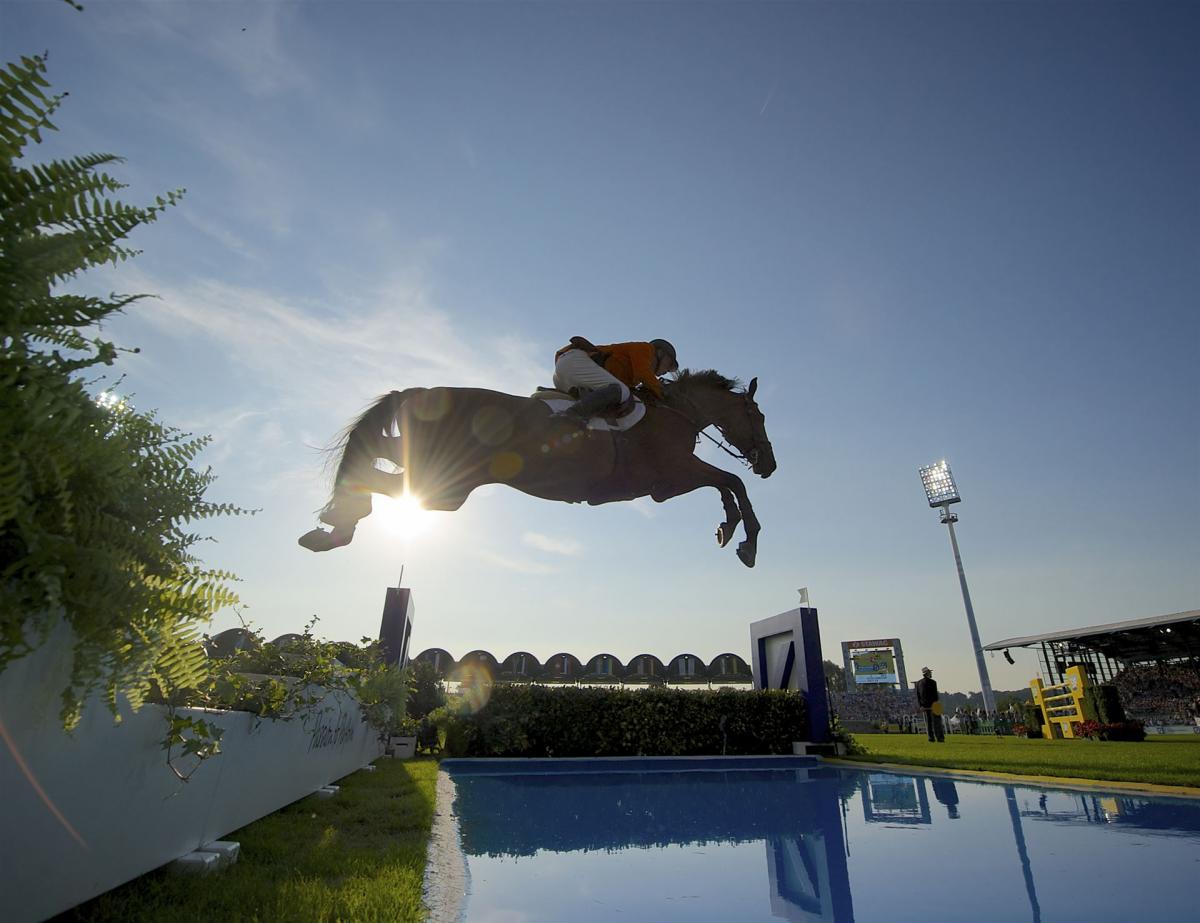
Seminar at the CHIO Aachen CAMPUS: The optimal preparation for a competition
How can I prepare myself optimally for the next competition? That was the key theme of the CHIO Aachen CAMPUS Seminar “Fit for the show jumping course!”. In both a theory and a practical part, the experts Matthias Bojer and Lars Meyer zu Bexten gave the participants helpful tips. At the end of the seminar, it was clear to everyone: Good preparation doesn’t just start at the show.
“What heart rate does a horse actually have when jumping a course?”, Matthias Bojer from the Institute for Outdoor Sports at the German Sports University in Cologne, asked looking round the room that was filled with blank faces. “Every top athlete knows the answer, regardless of what sport they practice. Only the riders don’t know in the case of their horses.” The graduate sports scientist frequently experiences the fact that riders don’t occupy themselves enough with the performance diagnostics. But according to Bojer precisely this is decisive: “Riding is a competitive sport. That requires physical fitness – of both the horse and rider”. They have to do fitness training. Whereby this is not just about being successful at shows, fitness also promotes health and minimises injuries. And the expert concisely answered how to best train the fitness of the horse: Frequency, duration and intensity lead to stamina. Of course, one has to start off slowly, increasing the training plan gradually – rather than trying to do too much at once. “For example, after the dressage work one can do a small canter session, first of all for two minutes, then three, until one has reached cantering for ten minutes in one go,” recommended Bojer, who incidentally competed successfully himself up to advanced level jumping. A further tip: Not purely giving the horse a day off at grass after a show, but instead exercise it gently, riding in the light seat.
But the fitness of the rider also plays a key role in preparing for shows. That is why the expert suggested the riders also do additional fitness training: “Every athlete does it. And gradually the riders are becoming aware of this, I see more and more professional riders in fitness rooms. But there is also room for improvement here in the amateur sector.” Physiotherapy is also a significant factor for riders, because how can the horse move in a straight line if the rider is crooked?
Following the interesting insight into the performance diagnostics, Lars Meyer zu Bexten, one of the most famous and most successful show jumping trainers in the world, demonstrated together with three riding pupils how to warm up optimally at a show. The expert also stressed that it is important to leave oneself enough time beforehand to walk the course. One should consider exactly how to enter the arena, where to greet the judges and which route to take to the first fence. “The first obstacle is the most difficult in the course,” explained Meyer zu Bexten. “One is still finding one’s rhythm and is perhaps not 100 percent concentrated yet, which quickly leads to faults.” The master in equestrian management gave the participants a tip for improving their concentration: Keep on going through the course in one’s head – even noting the colour of the fences. Not only the first fence is a typical source for mistakes, the same applies for the last obstacle too. Here it is helpful to set oneself a small task after the last obstacle. For example: Where shall I do my downward transition to trot? This is how to prevent oneself from thinking about the finish line before jumping over the last fence.
It became clear to the participants of the seminar that the rider’s mindset plays a major role. Both experts suggested the riders always set themselves positive goals: For instance, “I am going to concentrate solely on myself” rather than “I am not going to let others distract me”. Good time management is of course indispensable. “One should plan between 15 and 18 horses for an optimal warm-up,” stated Meyer zu Bexten. “Whereby how much the individual horses should jump beforehand, depends from horse to horse.” The crucial point is that the horse is responding to the aids correctly and that I keep checking this by changing the pace gently in the individual gaits. And the most important point: Develop rhythm. “If one has enough rhythm the right take-off occurs automatically”. If all these tips are followed, nothing can actually go wrong in the ring.














